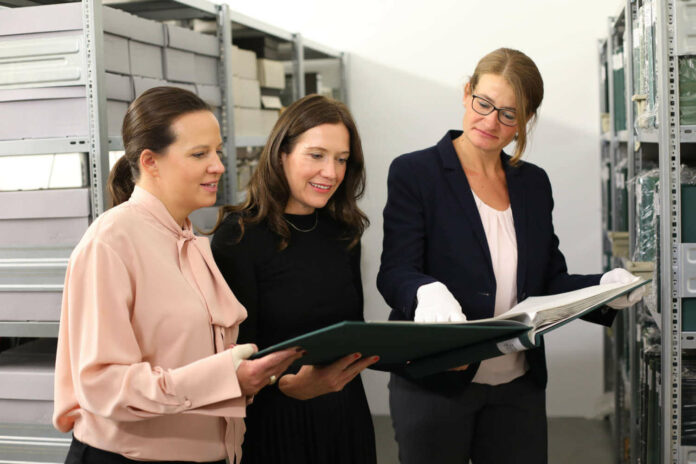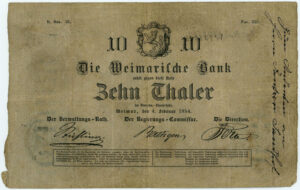

Giesecke+Devrient has been closely associated with the foundation HVB Stiftung Geldscheinsammlung for many years and has been involved in the banknote collection for over a decade. The collection documents paper currency in great detail and stores banknotes as a means of payment shaped by cultures and history. G+D has been represented on the foundation’s committees for a while now, and has ensured that the collection has been properly housed on its own premises since 2008.
“Our banknote collection is probably the world’s largest and most important collection in the field of paper money,” says foundation board member Celia von Mitschke-Collande. Together with Kirsten Peter, she is now responsible not only for the Giesecke+Devrient Foundation but also for the banknote collection. “It remains our goal to ensure that it can continue to be maintained and scientifically evaluated, but also made accessible to the public digitally or as part of exhibitions. We feel very connected to the subject because of our history.”

The banknote collection was founded as a private collection by Albert Pick and handed over to the Bavarian Hypotheken- und Wechselbank in 1964. In 2003, it was transferred to the newly established HVB Stiftung Geldscheinsammlung of UniCredit Bank AG. Today, the collection comprises more than 300,000 banknotes and ranges from Chinese paper currency from the 14th century to those currently issued worldwide.
Here you can visit the official website of the Giesecke+Devrient Stiftung Geldscheinsammlung.
For more information, visit Giesecke+Devrient’s website or their YouTube channel.
In 2019, a Thai banknote was awarded for their security features. They came from Louisenthal, a 450-year-old company that is part of the Giesecke+Devrient group since 1991.



